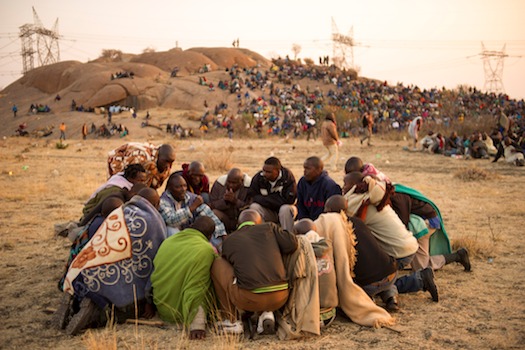- About
- Topics
- Story
- Magazine
- In-Depth
- Picks
- Opinion
- News
- Donate
- Signup for our newsletterOur Editors' Best PicksSend
Read, Debate: Engage.
| September 20, 2016 | |
|---|---|
| topic: | Racism |
| tags: | #apartheid, #black hair, #racism, #South Africa |
| located: | South Africa |
| by: | Shasha Seakamela |
Between 1948 and 1994, a pencil test was used as a method of assessing whether a person has afro-textured hair: A pencil is pushed through the person's hair. If the pencil stayed in your hair that would indicate it must be of kinky black stock. If the pencil slid through, you could be considered white. Blacks with soft hair, who wanted to be reclassified as mixed-race also could undergo the pencil test: if it fell out when you shook your head, you could be classified mixed (‘Coloured’ in South African race classification). The tests were so imprecise that members of an extended family could be classified into different racial groups. However still today, academics, scientists and researchers continue to discuss the legacies of Apartheid on the image of black people.
In August 2016 pupils started to demonstrate at the Pretoria Girls High School against an apparent policy prohibiting natural black hair as it is deemed ‘inappropriate’ and ‘untidy’. Blacks attending the former ‘Apartheid white-only’ school have apparently been forced to straighten their hair. Girls at the school, who are mostly wearing their natural hair, with dreadlocks and afros, have broken down while talking about the type of treatment they are facing everyday at their school.
“I have a natural afro, but a teacher told me I need to comb my hair because it looks like a birds nest,” one girl told Gauteng education MEC Panyaza Lesufi, who visited the school on 29th August. The girl told Lesufi she was given a brush and told to neaten her hair. She was told to "look at yourself in a mirror".
Pretoria Girls High School was founded in 1902 as a multi-racial school, according to its website, but was a ‘whites-only’ institution during the Apartheid era. The school's code of conduct includes a detailed list of rules about hair, but does not specifically mention the afro hairstyle, which some pupils say they are banned from having. “All styles should be conservative‚ neat and in keeping with a school uniform. No eccentric/fashion styles will be allowed‚” it reads.
“What these girls have demonstrated by standing up to being victimised must be lauded," said the Gauteng Education MEC Panyaza Lesufi. “I was touched, I must be honest, those young girls are brave and I need to congratulate them. I’ve gathered evidence that is enough for us to take a decision.”
South Africans, particularly black youth, have been using social media in recent months to raise questions about beauty, cultural tolerance and racism. They have been challenging what they describe as colonial standards that should have been dismantled years ago.
It was a little over two decades ago that South Africa’s ‘whites-only’ schools began to ‘welcome’ black students (African, Coloured and Indian) students into their classrooms. Guided by the official principles of multiculturalism and equality, many a white teacher has witnessed his or her classroom diversifying.
In most of these former white schools, racial hierarchies are not so much maintained and reproduced by the extreme physical, vile and verbal kinds of violence that we encounter as ‘incidents’ in the media. Instead, white superiority is more commonly inscribed on students’ identities in more subtle, implicit and ‘every day’ ways, through race, class, language, hair, style, culture and sports, as well as by the refusal to hire more black teachers.
This situation may have informed South African hair blogger Milisuthando Bongela’s assertion that “black hair has been treated with disdain for years because black people have been made to be a problem”.
In less than 24 hours following the demonstration, a petition calling for an end to racism in schools has gathered almost 15,000 signatures countrywide.
By copying the embed code below, you agree to adhere to our republishing guidelines.
